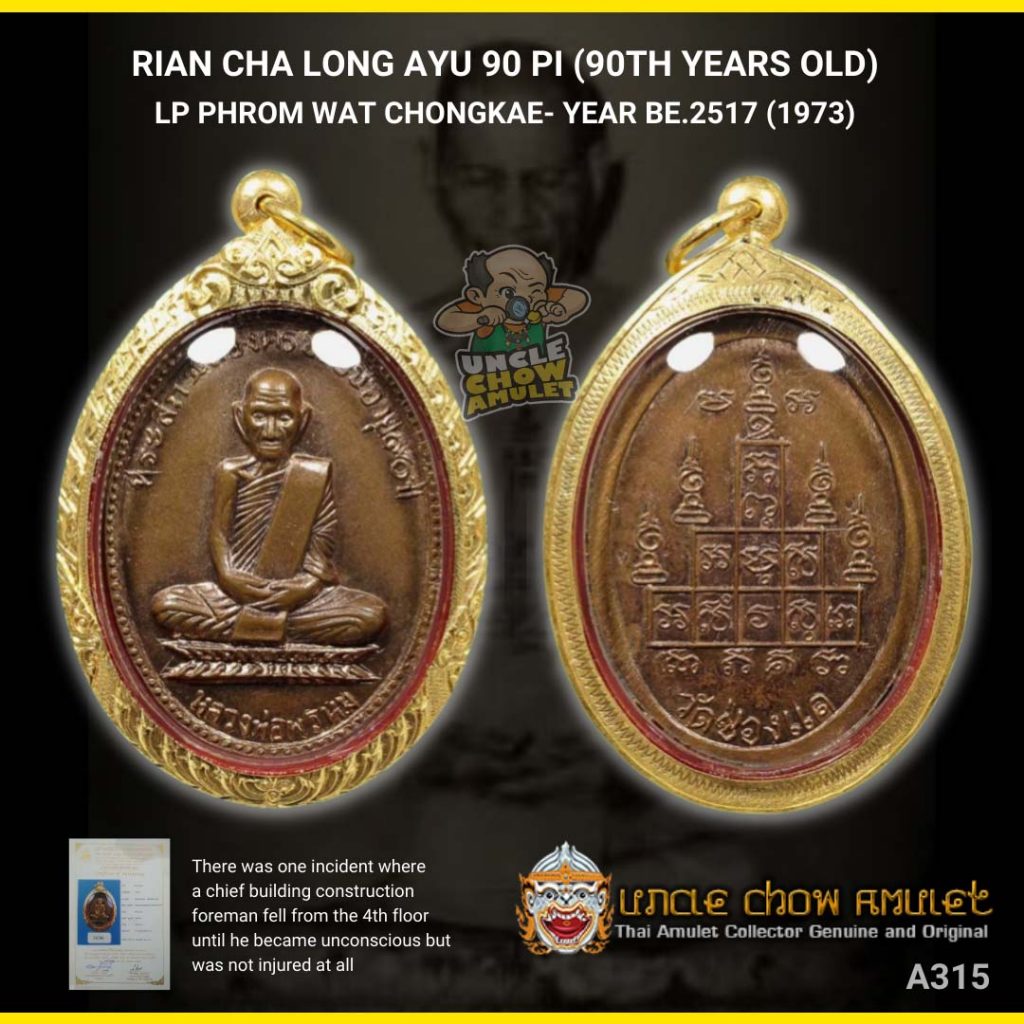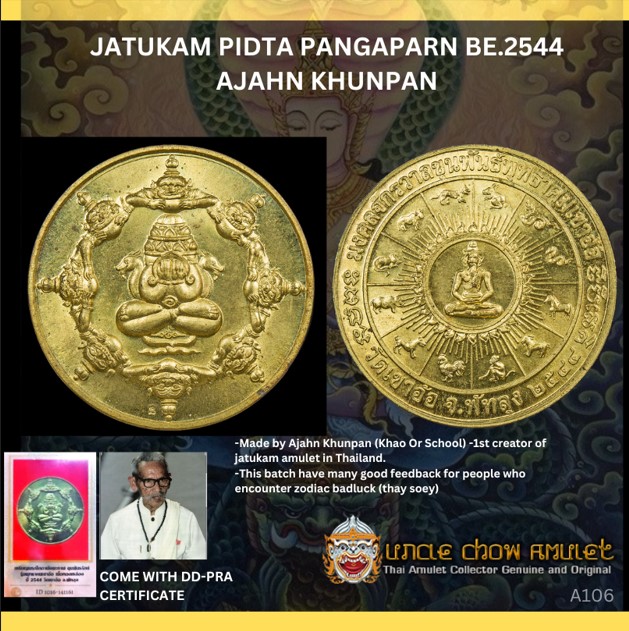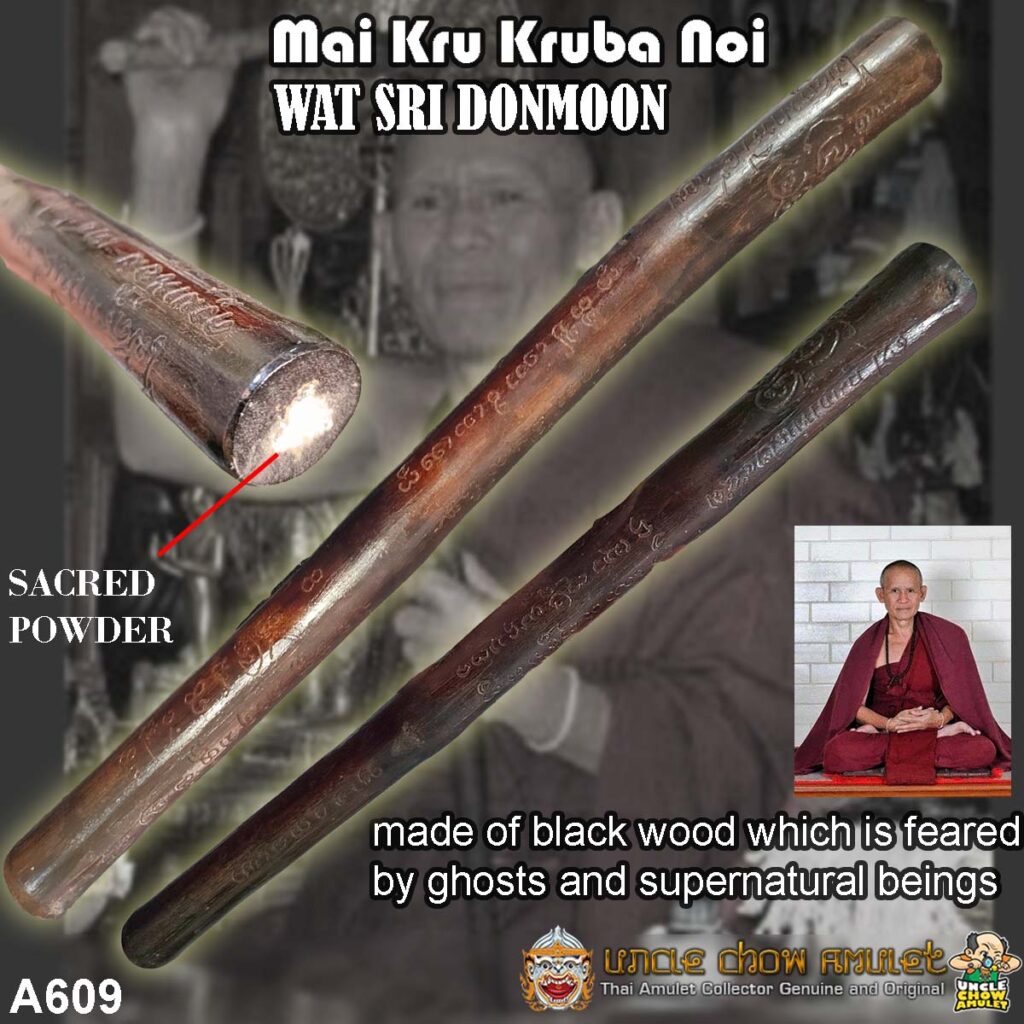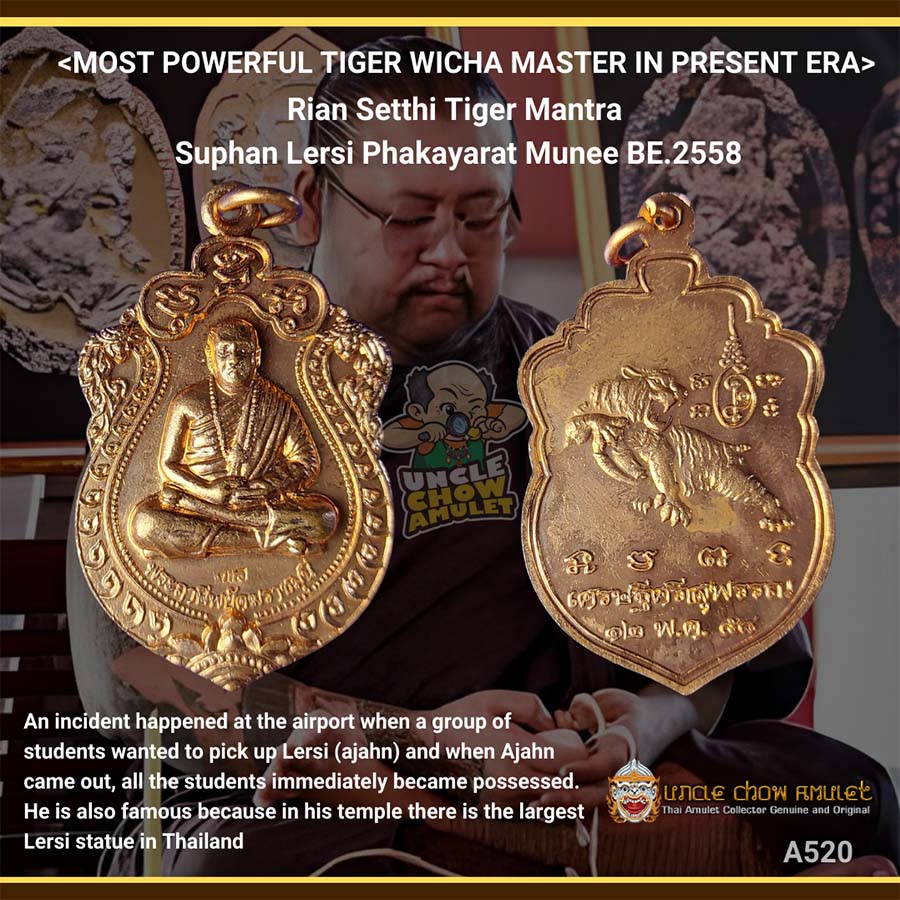Welcome to our store Uncle Chow Amulet Gallery
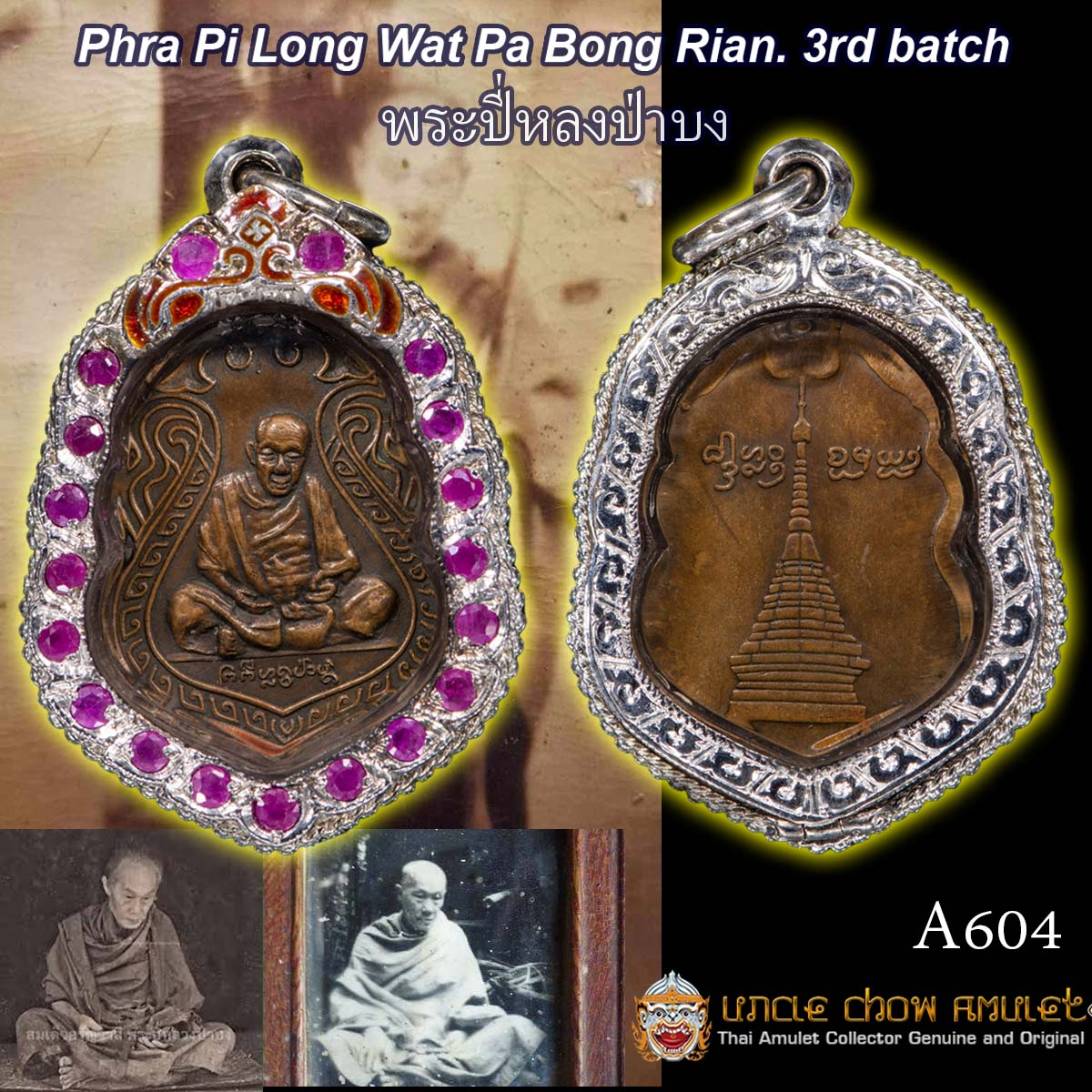
Uncle Chow Amulet
Phra Pi Luang Pa Bong, Rian 3rd batch
Item Code: A604 Name of Amulet: 3rd Edition Rian of Luang Phor Pi Luang Pa Bong, Mong Yang township, the ultimate experience coin of Chiang…
Category : Phra Pi Long Pa Bong
Share :
Product Details
Item Code: A604
Name of Amulet: 3rd Edition Rian of Luang Phor Pi Luang Pa Bong, Mong Yang township, the ultimate experience coin of Chiang Rai city.
- Master: Phra Pi Luang Pa Bong (Phra Phii Luang Pha Bong / Somdet Chao)
- Thai name: พระปี้หลวงป่าบง
- Temple: Wat Pa Bong, Mae Sai District, Chiang Rai
The Venerable Monk of Lanna
He is called Somdet Maha Pa Aranyavasi Pha Bong from Mong Yawng township (เมืองยอง), or just Phra Pi Luang Pa Bong. He was honored as Somdet of the Aranyavasi sect. His virtues and spiritual power were extraordinary.
In standard Central Thai, the word พี่ (Pi) means “elder sibling”, and by extension, might give the idea of someone who is older than you, but not necessarily senior or venerable in the religious sense. However, in Northern Thai (Lanna) language and tradition, the word ปี้ (Pi) (often written as ปี่ or ปี้, depending on local dialect transcription) is used as a respectful term for senior persons, including senior monks. It doesn’t mean young monk at all in this context. So พระปี่ means a very venerable elder monk (equivalent in respect level to Luangphor).
He is like a legendary figure, not widely known among Thai people, but for the Yong people or Lu people of Mong Yawng Township, he is a revered and special figure.
He was a contemporary of Kruba Chao Sriwichai (lived during the same era), and even Kruba Chao Sriwichai respected him. He helped Kruba Sriwichai build the Wat Doi Tung Temple and the main hall of Phra Chao Ton Luang in Phayao. In Phayao, there is a famous story about his virtues. When Kruba was building the main hall, no one could lift the beams, not even Kruba himself. He said that the owner would come to lift it himself, and it turned out to be Phra Pi Luang who came to help Kruba complete the construction. The elderly say that he flew from Mong Yawng to build his virtues with Kruba. There are many miraculous legends about his supernatural abilities.
The 3rd edition rian of Phra Pi Luang Pa Bong is renowned for its protective powers in Chiang Rai, Chiang Mai, and Burma, particularly for invulnerability and escape from danger. It’s very rare.
History of Somdet Chao Kanchai Ratch Aranyawasi
A Brief Overview of Phra Phi Luang Pa Bong, or Somdet Chao Kanchai Ratch Aranyawasi of Wat Pa Bong.
Birth and Early Life
His birth name was Khan Kham, born in 1881 (2424 BE). He was the son of Mr. Oun Kham and Mrs. Kham Saeng, residing in Ban Ko Lung, Hua Sip Nai Wiang, Mahiyang Konakorn City (aka. เมืองยอง, Mong Yang, Mong Yawng, or Muang Yong), Burma.
During his childhood, he accompanied his father to work in the fields. By accident, his hoe hit an earthworm, which saddened him deeply and inspired him to become a monk. His parents placed him in a temple as a temple boy. When he was 12 years old, his father, Mr. Oun Kham, passed away. Later, in 1900 (2443 BE), at the age of 19, he was ordained with Phra San Chai San from Ban Thung as his preceptor.
He spent one rainy season at Wat Ban Thung. During that time, he suffered from a paralytic stroke affecting his neck. He retreated to Phra That Om Kaeo for seven days and seven nights, but his worried mother brought him back. His mother and Phra San Chai San built a place for him near Ban Ko Lung.
Shortly after, he went to study meditation with Phra Kruba Maha Pa Yedham at Wat Phra That Luang Chom Yong until he was 28 years old. Then, he returned to his original temple, though it is unclear how long he stayed there. It is known that he later moved to secluded places and temples, including:
- Wat Ban Tha Duea: 2 rainy seasons
- Wat Pa Bong: 17 rainy seasons. At the age of 32, he was honored and established as “Somdet Chao Kan Chai Rach” by the monks and the faithful in Mahiyang Konakorn (Mong Yawng).
- Huai Rong Thong forest: 9 rainy seasons
- Khum Sang Lom forest: 11 rainy seasons
- Mon Tok: 12 rainy seasons (near Huai Rong Thong forest)
Passing and Legacy:
He passed away in 1966 (2509 BE), at the age of 85, having been a monk for 66 years. His cremation was presided over by Venerable Phra Maha Guru Kruba Khan Tharasa of Wat Ban Pung Luang, Venerable Phra Maha Guru Kruba Intapapa, Venerable Maha Sathi Thera of Wat Ban Tuang, along with many monks, novices, and lay disciples including San Kham Lue and San Chai Dee. The community came together for the cremation, and a stupa was built in his honor for future generations to venerate.
